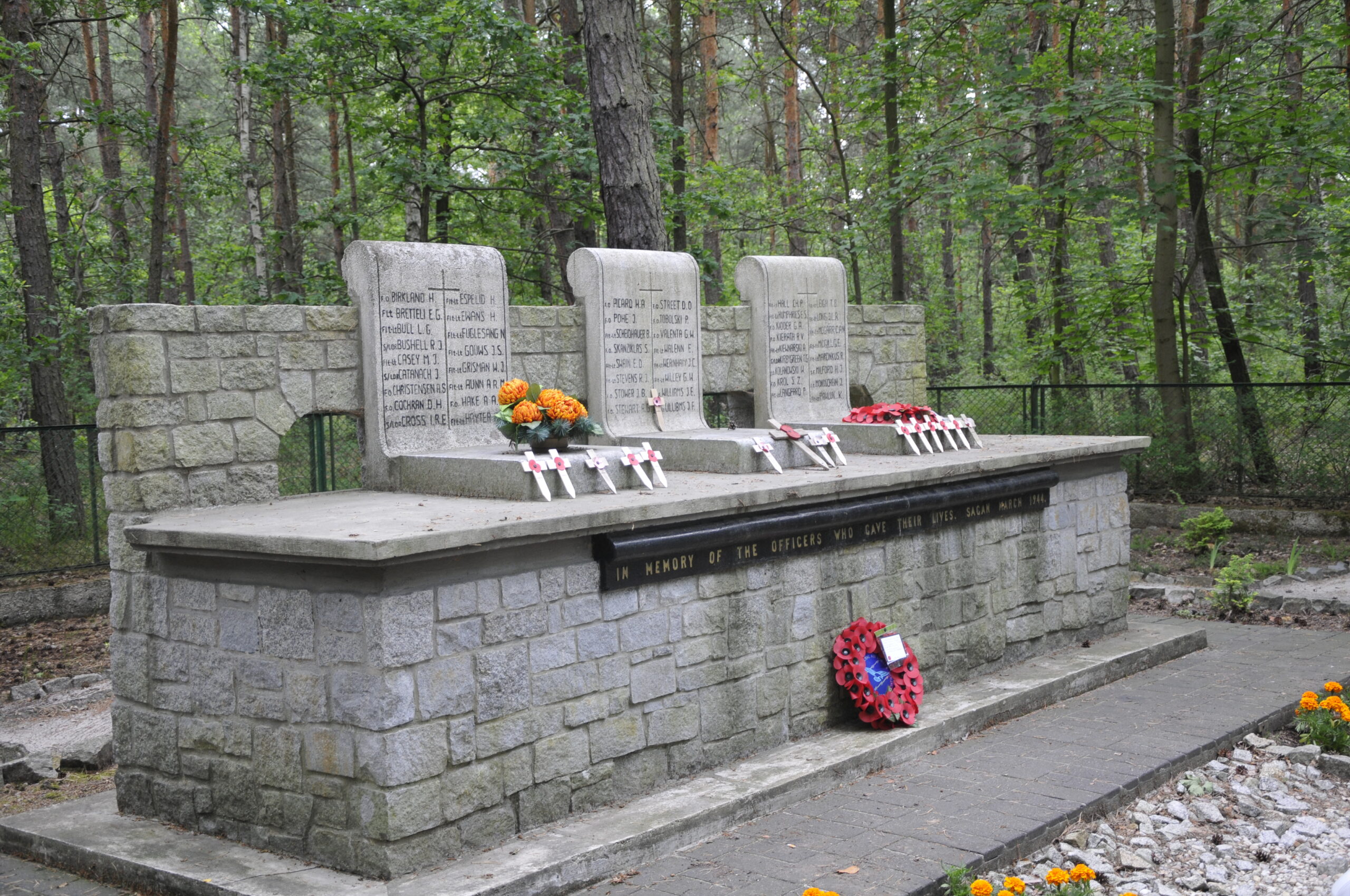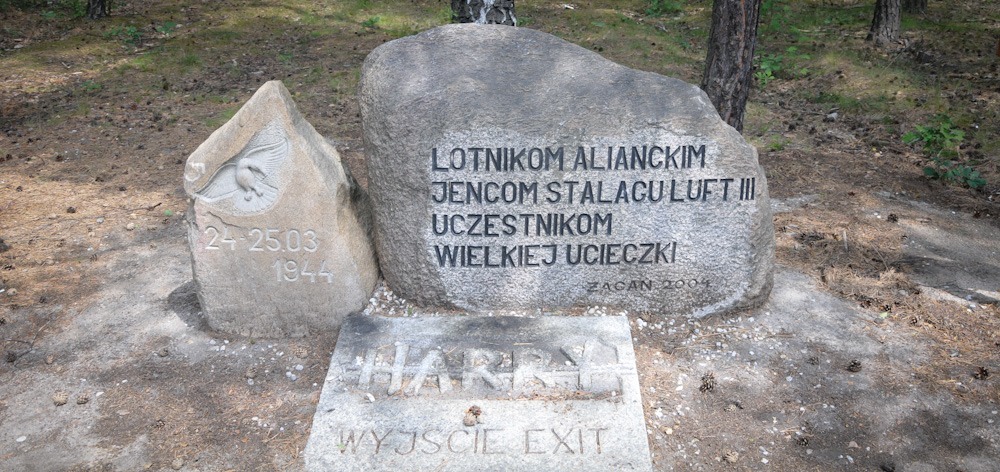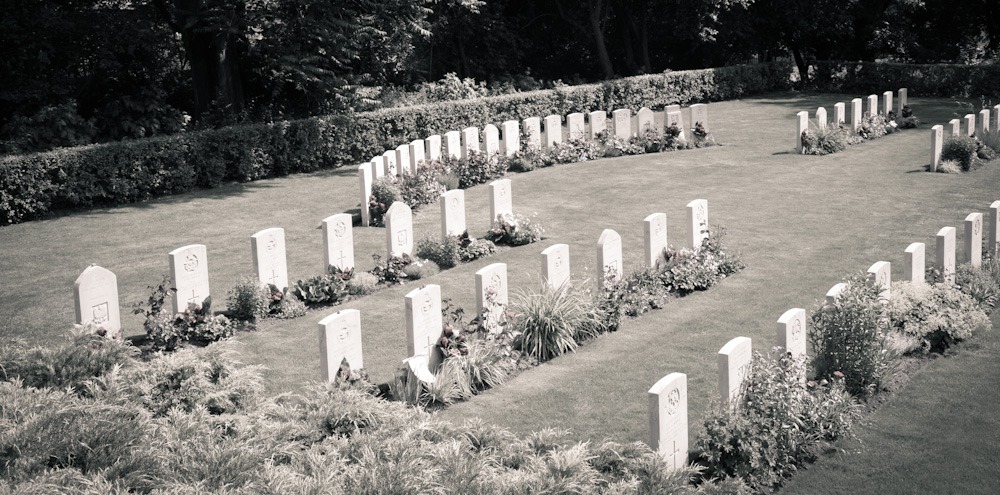
One of many POW camps in Europe was Stalag Luft 3, run by the Luftwaffe specifically for Aircrew PoWs. Ironically, this one was built specifically to house the troublesome PoWs inclined to try to escape.
There were escape attempts from many PoW camps but The Great Escape is most well-known because it was the largest mass escape and because Hitler ordered the execution of 50 of those recaptured.

The plan was to get 200 POWs out through a tunnel over 100 metres long and this was planned for 24 March 1944. It is thought that there were about 600 involved in the many parts of the preparation for this escape, digging, disposing of the soil, preparing documents and clothing, scrouging equipment and other tasks. The Germans discovered the tunnel after 76 PoWs had escaped to make their attempt to return to UK. Of these, only 3 were successful 2 Norwegians and one Dutchman, 73 were recaptured and fifty of those were murdered.
There were 13 nations among those murdered 20 British, 6 Canadian, 6 Polish, 5 Australian, 3 S African, 2 NZ, 2 Norwegian, 1 Argentinian, 1 Belgian, 1 Czech, 1 French, 1 Greek, 1 Lithuanian.
The nationalities of the 23 who were recaptured and return to captivity were 14-British, 3-Canadian, 2-Czech, 2-New Zealander, 1-French, 1-South African.
On the memorial walls of the IBCC the 28 Bomber Command aircrew are remembered. There is one panel with two of them, Flt Lt Gordon Kidder, Canadian navigator, and Sqn Ldr Thomas Kirby-Green, British pilot. They escaped together, were recaptured together, murdered together and are now remembered together. They are remembered together not only at the IBCC but also in the small town of Hrubuvka near Ostrava in Czech Republic. That town placed a small memorial to remember these two men who died fighting for the freedom of Europe. Thomas had a son, Colin who was eight when his father was killed. In 2011 Colin visited Hrubuvka for the first time, was hosted by a local family and saw the memorial. He returned to Hrubuvka again in 2019, on the 75th anniversary of his father’s execution. The town invited him as a guest of honour as they held a church service and civic reception in honour of Gordon and Thomas and those who had been killed from their town.
Colin has a close connection with one of the escapers who survived, Roy Langlois. Roy and Thomas became close friends while in captivity and when Roy was repatriated at the end of the war he visited Thomas’s widow, Maria to pass on his condolences but they got on very well and some two years later were married. Colin is grateful that he was blessed with two amazing loving fathers.
All of the Fifty were cremated and their urns were placed in a Mausoleum that the POWs were allowed to build at Stalag Luft 3. They were subsequently moved to Poznan cemetery, but Flt Lt Denys Street was moved to the Berlin Commonwealth War grave site and Lt Nils Fuglesang was repatriated to his home village of Rasvag in the Southern part of Norway.

To mark the 80th anniversary, a group of about 50 RAF personnel are visiting Poland on a force development trip which is centred on commemoration events for the Great Escape. On Saturday 23 March there will be a formal commemoration service at the Old Military Cemetery Poznan. RAF officers will also visit the graves of Denys Street and Nils Fuglesang to place wreaths at their final resting places.